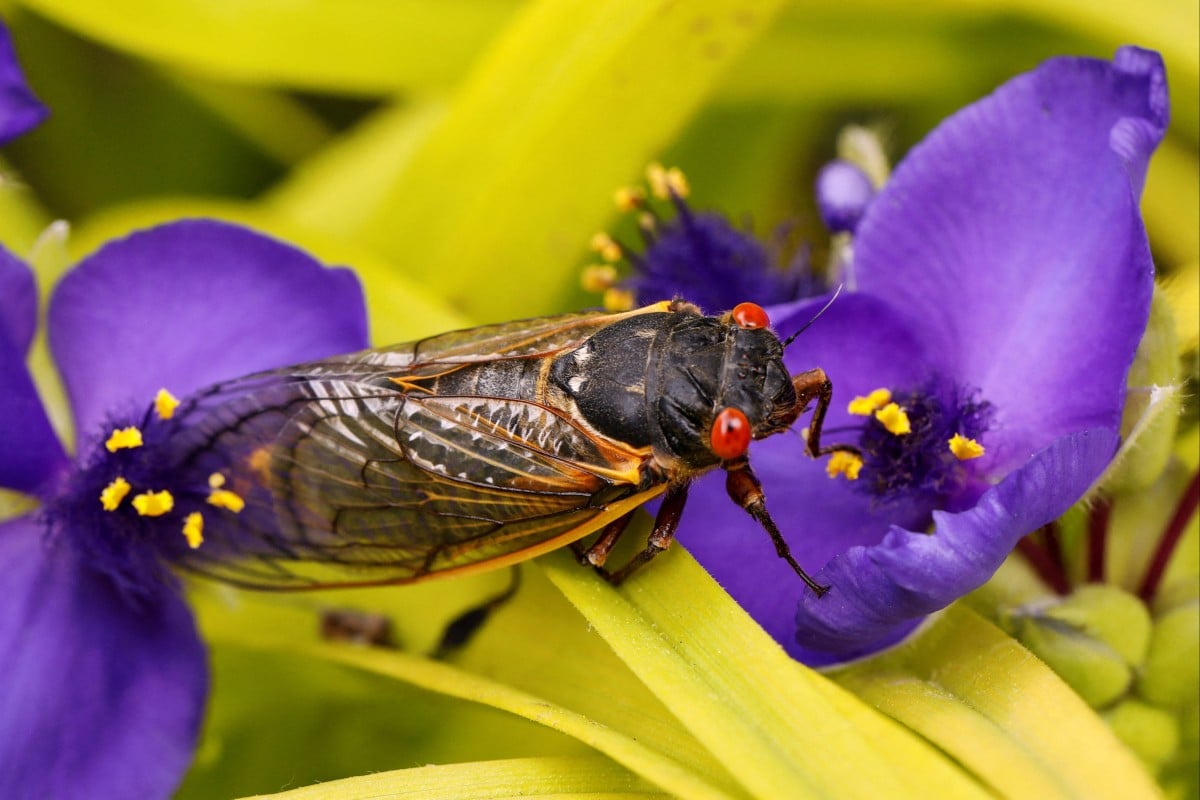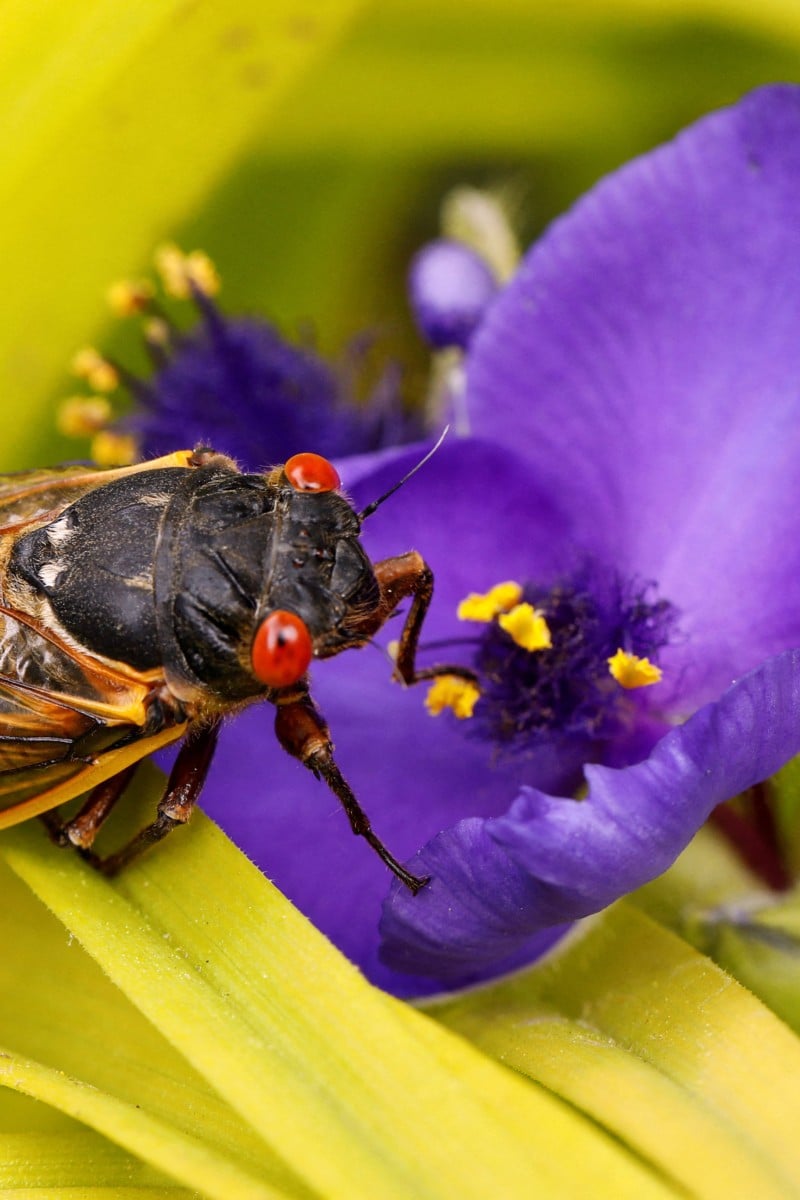- Double brood of the noisy bugs will emerge in parts of the Midwest and South in a rare natural phenomenon
- Adult cicadas live only a few weeks and die after breeding, but spend years underground as nymphs
 Parts of the US will be quite noisy this spring as two broods of cicadas emerge at the same time. Photo: Reuters
Parts of the US will be quite noisy this spring as two broods of cicadas emerge at the same time. Photo: ReutersParts of the United States are about to experience a rare natural phenomenon with the simultaneous emergence of two broods of cicadas. More than a trillion of these noisy bugs are set to pop out of the ground this spring.
The two broods – one concentrated in US Midwestern states and the other in the South and Midwest, with a small area of overlap in Illinois – emerge together only once every 221 years.
Cicadas are relatively large insects, between 2.5cm and 5cm long. They possess sturdy bodies, bulging compound eyes, and membranous wings. There are many different kinds of cicadas.
Complex shape of honeycomb shows fascinating skills of bees
Using needlelike mouthparts, cicadas feed on plant juices, called xylem, drawn from the roots of deciduous trees and shrubs. They spend much of their life cycle – years on end – underground as nymphs feeding on roots and drinking xylem.
After they emerge, adult cicadas live for just a few weeks, then die after reproducing. Numerous birds and mammals eat cicadas.
More about the two broods of cicadas
Brood XIII, on a 17-year cycle, is restricted mostly to northern Illinois, eastern Iowa, southern Wisconsin and a few counties in extreme northwestern Indiana. This is according to entomologist Floyd Shockley of the Smithsonian Institution’s National Museum of Natural History in Washington. Brood XIII includes three Magicicada species.
Brood XIX, on a 13-year cycle, is widely distributed from Alabama, Arkansas, Georgia, Indiana, Illinois, Kentucky, Louisiana, Maryland, Missouri, Mississippi, North Carolina, Oklahoma, South Carolina, Tennessee and Virginia – a total of 15 states, according to Shockley. Brood XIX includes four Magicicada species.
When will this take place?
The cicadas are expected to begin emerging in the southern parts of their geographical distribution soon and will continue northward into June. According to Shockley, more than a trillion cicadas will emerge during this time.
The cicadas mainly begin appearing at night, once the soil warms to about 17.8 degrees Celsius, said George Washington University entomologist John Lill. The nymphs crawl up any hard surfaces – tree trunks, fences, vegetation – and moult into adult winged cicadas.
After a few days, adults fly into the tree canopy, where males form loud “choruses”, calling to females by vibrating their tymbals (see graphic). The song pitch, tone, frequency and volume are specific to individual species.
Cicadas are among the loudest insects. Females that are attracted to a particular male’s call respond with wing flicks, which also make a sound. Pairs then mate.
Once mated, female cicadas seek pencil-sized branches of trees and shrubs in sunny locations to lay their eggs into slits they cut in branches, according to Lill. These eggs develop for about six to seven weeks. After this, hatched nymphs drop to the ground and burrow to begin the next generation of periodical cicadas.
US surgeons transplant pig kidney into human, hoping to test new source for organ donations
When was the last time two broods of cicadas emerged at the same time?
This will mark the first time that a 13-year brood emerges in the same year as a 17-year brood since 2015. According to University of Connecticut evolutionary biologist John Cooley, the last time 13- and 17-year broods emerged near each other and in the same year was 1998. Brood XIX, one of the two popping out this year, emerged in 1998 at the same time as Brood IV, which spans Iowa, Kansas, Missouri, Nebraska, Oklahoma, and Texas.
Cooley said the next time two 13- and 17-year broods will emerge in the same year will not be until 2037. The next time adjacent – meaning they are geographically close to each other – 13- and 17-year broods will emerge together will not be until 2076.
